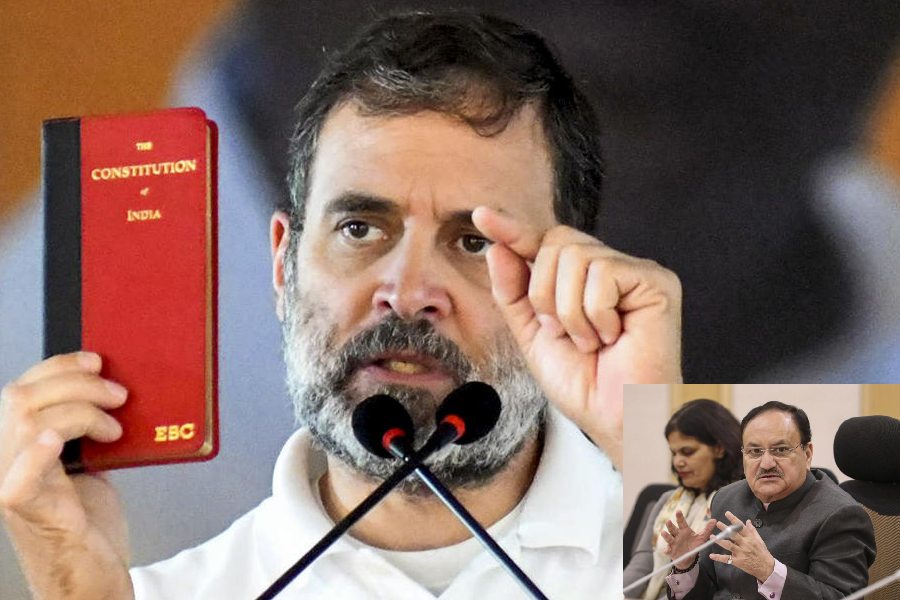The king, as the saying goes, cannot please all his subjects.
That is what the ruling Mahayuti alliance in Maharashtra is finding out as the state heads to the polls on November 20.
While onions brought tears to the coalition of the BJP, Eknath Shinde’s Shiv Sena and Ajit Pawar’s NCP during the Lok Sabha polls this year, this time the onion growers are not moaning about poor prices. Onion prices have risen in recent weeks with the Narendra Modi government lifting the ban on onion exports and the region experiencing a good monsoon.
But soybean and cotton growers are wailing over the poor realisation for the
cash crops.
Unattractive prices are just one problem that the shetkari (“farmers” in Marathi) face in the state. Maharashtra continues to see farmer suicides because of crop failures, low prices and rising debt. Some 2,851 farmers took their lives in 2023 against 2,942 in 2022.
During the first half of this calendar year, the number of farmer suicides stood at 1,267 with the Amravati division in the Vidarbha region accounting for 557 deaths.
Observers believe that the Mahayuti would have to face a backlash from farmers in the Marathwada and Vidarbha regions, which account for 108 of the state’s 288 Assembly seats. Though other factors such as caste politics too can influence the voting, farmer discontent could give the Opposition Maha Vikas Aghadi (MVA) the edge in at least these two belts.
“Soybean production has been affected because of excess rainfall this year. Famers are selling soybean at a price less than the minimum support price (MSP),” Anil Ghanwat, a farm leader and former president of the Shetkari Sanghatana, a Maharashtra-based farmers’ union, said.
“While the MSP is ₹4,892 per quintal, the farmers are getting between ₹3,800 and ₹4,100 per quintal in the open market. If this is the situation, how can the farmers be happy? This is happening because of the government’s policies. The farmers are angry and they want to teach the government a lesson.”
The picture relating to cotton is no different. While its MSP has been set at ₹7,521 per quintal, data from Napanta — a digital agricultural platform — shows its prices hovering between ₹6,750 and ₹7,525 in the Amravati market, with the average price at ₹7,137 a quintal.
“Around 22 lakh bales of cotton were imported recently. If imports continue, the price of the domestic produce will remain soft,” Ghanwat added.
The total area under cotton cultivation in Maharashtra (the country’s second-largest producer) is estimated to be 40.71 lakh hectares. The agriculture department puts the state’s cotton production at over 19 lakh tonnes. For soybean the numbers stand at 49.86 lakh hectares and 59.86 lakh tonnes.
The Shinde government has attempted some damage control. On September 30, it released a sum of ₹2,400 crore to cotton and soybean growers under a new scheme that provides a subsidy of ₹5,000 per hectare to farmers.
However, this was for the previous year’s harvest. Farmers who grew the two crops in the 2023 kharif season and had registered with the state government’s portal received the amount in their bank accounts.
In June, the government waived the electricity bills of farmers who use agriculture pumps of up to 7.5 horsepower.
The Congress has latched on to the issue of farmer distress to attack the Mahayuti.
Rahul Gandhi, leader of the Opposition in the Lok Sabha, has said that Maharashtra’s farmers are frustrated with the BJP government’s anti-farmer policies. He has promised that if the MVA comes to power, it will fix an MSP of ₹7,000 per quintal for soybean and also provide a bonus.
The Congress says Maharashtra has lagged behind other states in procuring the oilseed. While the state purchased only 3,888 tonnes against the sanctioned quantity of 13.08 lakh tonnes, Congress-ruled Telangana procured nearly 25,000 tonnes.
Raju Shetti, founder of the Swabhimani Shetkari Sanghatana and now a part of the so-called third front, told The Telegraph that the farmers were displeased with the government’s policies. He said the government ought to provide a legal guarantee for MSPs, which he said would benefit both the consumers and the farmers and was the only way to alleviate the crisis.
Onion growers in areas like Nashik and Dindori, who cost the Mahayuti five of the six Lok Sabha seats because of low prices, have seen some good news in recent times that may bring some relief to the ruling alliance.
This kitchen staple is now retailing at around ₹90 a kilo in some regions like Pune. This increase has been attributed to supplies taking a hit because of rain in October.
Onions are grown in three phases: kharif, late kharif and rabi. While the kharif onion crop is sown in June-July (and harvested in October), the late kharif crop is sown in October and harvested around January. The rabi crop is sown in December and harvested in March.
Bharat Dighole, president of the Maharashtra Onion Farmers’ Association, said the output of new onions had been affected in some regions because of the rain in October. Besides, the supplies stored in the godowns had depleted.
Dighole, however, said onion arrivals would improve in the coming days and probably lead to a softening of prices.
At the Lasalgaon wholesale market, the country’s biggest onion mandi, the commodity (new or red onion) was recently trading at between ₹3,000 and ₹5,300 a quintal, with the average price around ₹4,600.
For the stored or old stock, the prices were ruling between ₹4,000 and ₹6,200 a quintal. A month earlier, the prices had ranged between ₹4,000 and ₹4,485 a quintal.
Dighole said the NDA government had faced the onion farmers’ wrath during the Lok Sabha elections because of the crop’s low prices and the export ban imposed last December.
The ban was lifted in May just before the Lok Sabha elections in the onion-growing regions of Maharashtra. But it came with certain conditions that included a minimum export price (MEP) and a 40 per cent export duty.
In September, the MEP was scrapped and the export duty halved to 20 per cent, apparently with an eye on the Maharashtra polls.
Dighole claimed that the price of onion was no longer a major issue ahead of the state elections since crucial decisions relating to the commodity had been taken at the central level. Besides, the state government had given a subsidy of ₹8,500 crore last year apart from disbursing farm insurance to farmers.
Maharashtra votes on November 20











